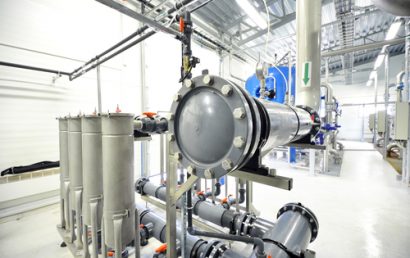A Guide To Metallographic Preparation Of Thermal Spray Coatings
Although spray coatings have been widely used in various applications, the processes can be tricky to prepare for the metallographic investigation. Here’s a guide to metallographic preparation of thermal spray coatings – we share some key challenges involved and how they can be overcome.
What You Need to Know About Thermal Spray Coatings
Essentially, thermal spray coatings are used on a substrate to form the desired surface quality. Hence, the substrate forms the bulk of a component, and the coating tackles issues such as wear, heat resistance, or corrosion.
In the 1900s, to achieve corrosion protection, thermal spraying was invented using zinc to ‘metalize’ substrates. A range of different spray materials are utilized today – such as metals, ceramics, carbides, and composites – and thermal spray coatings have been heavily used in the power generation and aerospace industry for both refurbished and new parts and sections.
Metallography of Thermal Spray Coatings
These are the various functions of metallography of thermal spray coatings: ensuring quality control by monitoring and regulating spraying conditions; developing new products; and analyszing failures. The procedure typically sees a test coupon being coated to optimize the procedure for the area to be thermally sprayed. Then, various parts of this test are prepared metallographically to assess:
- Distribution and size of porosity
- Coating thickness
- Ability to stick to the base material
- Oxides and cracks
- Unmelted particles
- Interface contamination
There are numerous coating materials, at times with irregular combinations. Hence, it is critical to understand which substrate and coating material you are preparing for the analysis. This will allow you to roughly gauge the behavior of the materials in mechanical abrasion. As the spraying processes result in varying coating structures and densities, it is helpful to fully understand the spraying method applied to a specific sample so you can estimate the oxide content and porosity.
Preparation of Thermal Spray Coatings: Cutting and Mounting
- Cutting thermal spray coatings
In the process of choosing a cut-off wheel, the key factor to consider is the substrate material, which is typically metallic. However, opt for a wheel with a soft, loose bond, especially when slicing parts with ceramic coatings. This is to prevent dragging brittle particles from the coating. Even if it’s ceramic coating, it makes up only a tiny percentage of the total cross-section area and does not need to be cut with a diamond cut-off wheel. Typically, sectioning is allowed with a soft aluminum oxide wheel. A deep, resin-bonded diamond cut-off wheel can be used as a solution if the ceramic coating is very thick.
Cracks may be found in the coatings after the final stage of polishing, but don’t worry. Polish and re-grind the sample if this is the case. If the crack is derived from cutting, it will likely disappear. If the crack is not the result of cutting, cracks may appear in other areas.
- Mounting Thermal Spray Coatings
Hot compression mounting is not advisable, as this destroys spray coatings. We advise cold mounting with epoxy resin (CaldoFix-2, EpoFix, ProntoFix). Nevertheless, please remember that cold mounting resins with high shrinkage could destroy coatings with weak adhesion to the substrate.



